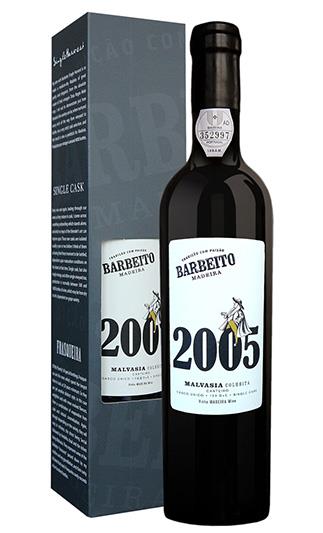Advertisement
Popular Wines Like This
Who Likes This Wine(1)
-

apple1813
943 Tasting Notes
Community Tasting Notes (2) Avg Score: points
What Do You Think? Add a Tasting Note
Pro Reviews
Professional reviews have copyrights and you can view them here for your personal use only as private content. To view pro reviews you must either subscribe to a pre-integrated publication or manually enter reviews below. Learn more.


12/30/2020 - apple1813 Likes this wine: 93 Points
2004 Barbeito Madeira Malvazia Colheita Single Cask 132 a + d portrayed a complex mixture of nuts, spices and preserved fruits. The Madeira was clear and medium amber in colour without any sediments. Pronounced notes of toasted walnuts, nutmeg and caramel jumped out of the glass, followed by brandied red cherries, ginger bread and chocolate sponge cake. The aromatics intensified two days after the bottle was uncorked.
The mouthfeel was sweet and full-bodied, with the sweetness balanced by spices and high level of acidity. There was a sparing amount of tannin which gave it an appealing texture. The long aftertaste was filled with rancio qualities, like raisins, dried orange zest, marzipan and hazelnuts.
Do you find this review helpful? Yes - No / Comment
4/19/2020 - apple1813 Likes this wine: 93 Points
2004 Barbeito Madeira Malvasia Colheita Single Cask 132 a + d showed complex interplay of sweetness, acidity and oxidative flavours. The Madeira was clear and medium amber in colour without any sediments. The nose was pronounced, with bruised apples, brandied red cherries, caramel, walnuts and preserved tangerine zest, followed by nutmeg, coffee, and a whiff of volatile acidity in an enhancing manner. The mouthfeel was sweet and full-bodied, well-complemented with spiciness, high level of acidity, and an intriguing medium level of silky tannin. Flavours of raisins, walnuts, cashew and dark chocolate lingered in a long spiced finish.
According to the winery website, the wine was aged in warm warehouse "a" for five years to develop concentration, and then transferred to cooler warehouse "d" to age for another nine years to gain acidity and balance. 1,118 half-litre bottles were filled in June, 2018.
Madeira for cooking purposes is often made by estufagem process, which is controlled heating of the wine in large concrete or stainless steel tank up to a maximum temperature of 55 degree Celsius for at least 90 days. Great Madeira, on the other hand, are left to age naturally in 600-litre casks for years in warm caves under the heat of the sun.
The sweetness of Madeira derives from fortification that arrests the fermentation. There are four noble Madeira grapes, and each has its characteristic style. Listed in ascending order of sweetness, they are Sercial, Verdelho, Boal and Malvasia. The latter sweeter two are traditionally fermented on the skins to extract tannin and flavours, while the former dryer examples have the grape skins separated before fermentation.
1 person found this helpful, do you? Yes - No / Comment